The traffic police inspector has the right. Accident with serious consequences
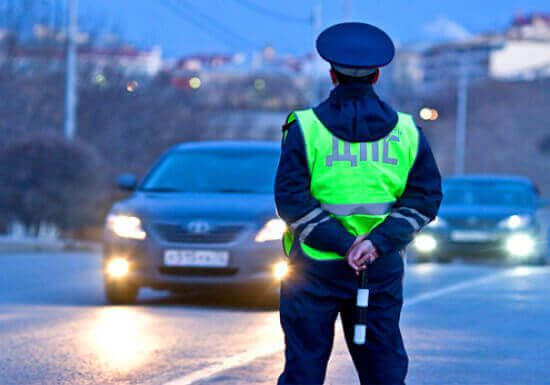
Question
How should a traffic police officer behave when communicating with participants traffic? In which normative act Are the duties and rights of traffic police officers fixed?
Answer
Answering the above questions, first of all, we note that one of the regulations governing the relationship of traffic police officers with traffic police drivers is the “Administrative Regulations of the Ministry of Internal Affairs Russian Federation performance state function on control and supervision of compliance by road users with requirements in the field of road safety”, approved by order of the Ministry of Internal Affairs of Russia dated 02.03.2009 No. 185 (hereinafter referred to as the traffic police regulations).
This document obliges traffic police inspectors, entering into relationships with road users and other citizens, to be guided by the following instructions.
1. Traffic police inspectors must strictly observe the law, while fulfilling their official duties clearly, decisively and in principle.
2. When addressing citizens, a traffic police officer must introduce himself: give his position, special rank and surname, and briefly state the reason and purpose of the appeal. At the same time, he must behave politely and attentively, address them as “You”, be objective and tactful, show calmness and restraint. At the request of road users, traffic police inspectors are required to present an official certificate (in expanded form, without releasing it from their hands). However, in some cases related to the need for emergency use by a traffic police officer physical strength, special means and firearms presentation and presentation of service certificate is optional.
3. The requirements and remarks of traffic police officers in relation to citizens must be stated convincingly and understandably in such a way that there is no erroneous or ambiguous understanding of them.
4. If citizens apply to a traffic police officer on their own initiative, he is obliged to take all necessary measures on their applications within his competence or explain where they need to go to resolve the issue. However, it must be borne in mind that reference Information, on which the traffic police inspectors can give clarifications, is limited only to questions that relate to:
- specifics of travel or clarification of the route;
- locations medical institutions and police authorities;
- information about phones to obtain information about vehicles and specialized parking lots for their storage.
5. The traffic police inspector must contact the driver vehicle, usually from the side of the driver's location. If there are objective circumstances (for example, a threat to the personal safety of the inspector when he is on the roadway, road pollution, and others), the traffic police officer has the right to contact the driver from the opposite side of the vehicle.
The traffic police regulations provide that traffic police inspectors also have the right to offer road users to get out of the vehicle. However, this is only possible in the following cases:
- when it is necessary to eliminate a technical malfunction of a vehicle or a violation of the rules for the carriage of goods;
- if the driver has signs of intoxication and (or) a disease state: (smell of alcohol from the mouth, posture instability, speech disturbance, a sharp change in color skin persons, behavior that does not correspond to the situation);
- to verify the compliance of the numbers of units and components of the vehicle with the data recorded in the registration documents;
- when it becomes necessary to carry out a personal search, examination or search of a vehicle and (or) cargo;
- to participate in legal proceedings when it is necessary to get into a patrol car or go to an office);
- in cases of need to provide assistance to other road users or police officers;
- if the behavior of the driver or passengers poses a threat to the personal safety of the traffic police officer.
6. If the traffic police officer has established sufficient data that indicate the commission of an administrative offense, he must explain to the person what offense he has committed, and also what exactly it is. The regulation of the traffic police also obliges him to find out the presence or absence of circumstances that exclude proceedings in a case of an administrative offense. At the same time, in the case when the actions of a traffic police officer are aimed at restricting the rights and freedoms of a citizen, for example (for example, his personal search, detention of a vehicle, seizure of things or documents, etc.), the officer is obliged to explain to the citizen the reason and grounds for such a restriction, as well as and obligations that arise from this citizen.
When explaining to the offender the essence of the violation committed by him, the traffic police officer must refer to the relevant requirements of the Rules of the Road and other regulatory legal acts, avoiding any moralizing.
7. In conflict situations, as well as in the presence of claims or demands of road users, the traffic police officer must explain to them the procedure for appealing their actions, the location and telephone number of the traffic police on duty unit or the responsible official.
8. According to the traffic police regulations, traffic police inspectors, when communicating with road users, not only have the right to use video and sound recording equipment, but should not interfere with the use of such equipment by road users. However, both traffic police inspectors and road users can use this right only in cases not prohibited by law. The traffic police officer is obliged to inform the road user who intends to make such a record about the existence of such a ban.
9. When checking the documents of citizens, traffic police inspectors must handle them carefully. Any marks in places not provided for this are not allowed. Documents that road users submit to the traffic police inspector at his request for verification and (or) are attached to the compiled materials must be accepted by the employee without covers.
Modern practice has a lot of examples of how rudeness and lack of professionalism become a reason for filing a complaint with their management. The vast majority of violations are related to an unreasonable stop, refusal to explain the reasons for detention, an attempt to issue a non-existent fine and unwillingness to give one's rank and surname.
If we consider the situation in more detail, it becomes clear that such behavior of traffic police officers is due to their status, which allows them to exercise control and take an active part in certain areas. Everyday life Russians. At the same time, it must be remembered that the rights and obligations of traffic police officers imply not only the need to prevent accidents, eliminate their results and monitor the compliance of all traffic participants with the relevant rules. Most often, traffic inspectors are well aware of their rights, but completely “accidentally” forget about their duties.
In accordance with the current legislation, rudeness and rudeness emanating from traffic inspector, is a gross violation. When communicating with drivers, traffic police officers are obliged to strictly comply with the law, fully fulfill their duties, do everything possible to prevent violations, and speak politely and kindly to citizens.
Turning to any of the drivers, the policeman is obliged to put his hand to the cap, introduce himself, clearly and legibly speaking his data, and voice the reason for stopping. If the communication is initiated by the driver, passenger or pedestrian himself, the law enforcement officer should follow the above steps and provide the required support or provide advice.
The badge must be positioned in such a way that it can be easily seen. The inspector reports the badge number if the interlocutor puts forward a corresponding requirement. As for the certificate, it is shown in open form, but out of hand is not released.
The inspector must handle documents with particular care. It is strictly forbidden to put marks in them. If, upon receipt of documents, money or other valuables are found in them, you need to ask the driver to pick them up on their own. If we talk about the key responsibility of any inspector, then it is to ensure the safest possible movement on the roads. Of course, the topic is relevant and sensitive today, so there is no point in discussing it, considering the rights and obligations of traffic police officers.
If you focus on who exactly can stop the car, then initially, the purpose of the transport should be taken into account. In particular, when it comes to cars, then their stop is within the competence of traffic controllers. As regards passenger and freight transport, then their stop must be made in special places marked with the appropriate sign.
Transportation officers can also stop a truck or bus, but they appearance and actions must meet a number of requirements. Representatives of the Federal structure must be dressed in uniform and use a special disk equipped with a retroreflector or a red indicator to perform all actions.
In order for the car owner to pay attention to these actions, the law enforcement officer can use a signal whistle.
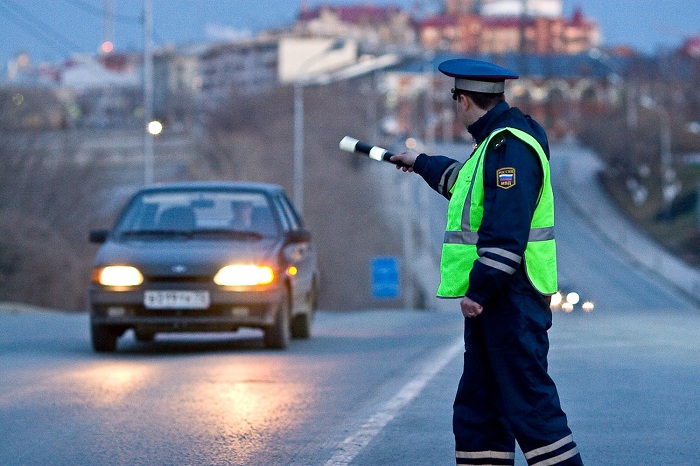
Freely slow down the movement of certain cars and check papers, the police can only at stationary posts. The performance of such actions outside the specified place is permissible only under the occurrence of certain circumstances, which include:
- Failure to comply with traffic rules by any of the road users;
- The traffic police officer has information indicating that the car owner or one of the passengers was involved in the previously identified offense;
- The car is wanted, or the police officer has information that it was used for illegal purposes;
- There was a need to obtain evidence from the car owner or passengers about any incident that they witnessed;
- Execution of decisions on the prohibition or partial restriction of travel, taken by authorized authorities;
- Another driver or the policeman himself needs help.
Stopping outside fixed posts is also possible during the implementation special events. During this period, the car can be slowed down, the documents of the person behind the wheel and the papers for the transported cargo can be checked.
As for the “favorite” phrase of many law enforcement officers that the stop was made for a “routine check”, this is illegal, indicates a direct non-compliance with official discipline and provides for punishment.
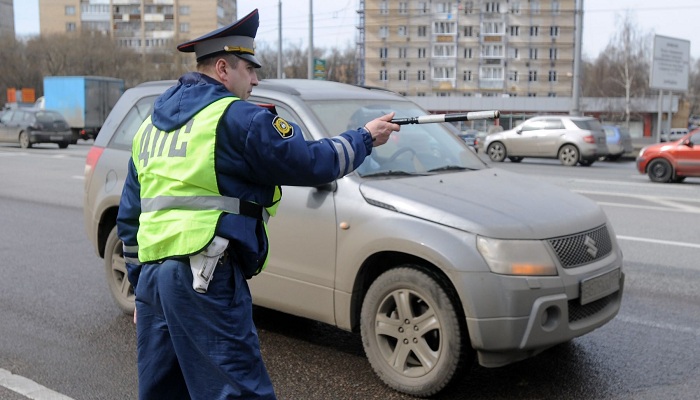
It is not uncommon for a policeman to stop a car and say that anti-terrorist measures are being carried out in the city, so he is obliged to check. In fact, such words are extremely rarely true. The fact is that the law prescribes to officially publish any such events.
If we talk about penalties provided for an unreasonable stop, then their amount is 20 thousand rubles, which today is a fairly significant amount.
Among other things, the law also indicates areas where stopping a car by a traffic inspector is strictly prohibited.
In particular, we are talking about the following areas:
- Tracks where visibility is severely limited;
- Immediately before performing the maneuver;
- After completing a turn or other maneuver;
- Before starting uphill
- After descending from the top;
- In close proximity to road crossings, walking paths, railway tracks and other areas that are dangerous.
The only exceptions are situations where an immediate stop is really necessary. When the rights and obligations of traffic police officers are violated by the law enforcement officer himself and the citizen is claim letter on their actions, the text of the document should list all violations committed by the inspector, including non-compliance with safety requirements and unreasonable braking of the car in a dangerous place.

Practice clearly demonstrates the banal ignorance of standard terminology by Russians. The concept of "stationary post" is often given a completely different meaning. Often, traffic inspectors try to convince citizens that this term means a parking place. company car in this moment time. Such a statement is far from the truth.
A stationary post is a place equipped with premises, special equipment, communications, as well as a nearby section of the road, equipped for the safe stop of cars. The control police post, which is part of the car search system, has a similar name. If at least one of the above conditions is not met, the post cannot be considered stationary.
Who is a regulator?
Along with the term "stationary post", Russians often have questions regarding such a definition as "regulator". If we start from the definition indicated in the legislation, then we can interpret it as follows: the regulator is executive, which has the authority to control the traffic situation, using special signals and direct traffic control.
The clothes of the specified person must be uniform and be supplemented with a special badge and equipment. It is useful to know that traffic controllers are not only police officers, but also employees of other services who perform their immediate duties.
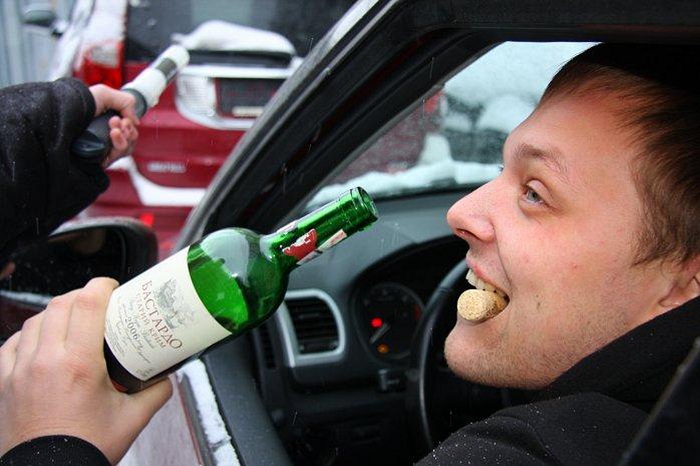
Considering the rights and obligations of traffic police officers, it is necessary to pay attention to the situation when a police officer asks the driver to leave his car. If this request is not supported by legislative justification, then the actions of the inspector are a direct violation civil rights. The law provides for only a few circumstances that allow the traffic inspector to require the car owner to get out of the car.
These include:
- Failure to comply with the rules for the transportation of goods or the need to make minor repairs to the car;
- There are good reasons to believe that the person driving the car is in an intoxicated state;
- For the purpose of carrying out the reconciliation procedure and entering relevant information into the registration papers;
- For the purpose of carrying out the procedure for inspecting a car and the cargo contained in it;
- The car owner or passengers are suspected of committing misconduct;
- Other situations that require the direct participation of the driver (assisting another car owner, filling out paperwork, etc.).
In other words, if a traffic police officer stopped the car and asks the driver to leave his vehicle, then the decision to fulfill this request is made exclusively by the car owner, with the exception of the situations listed above.
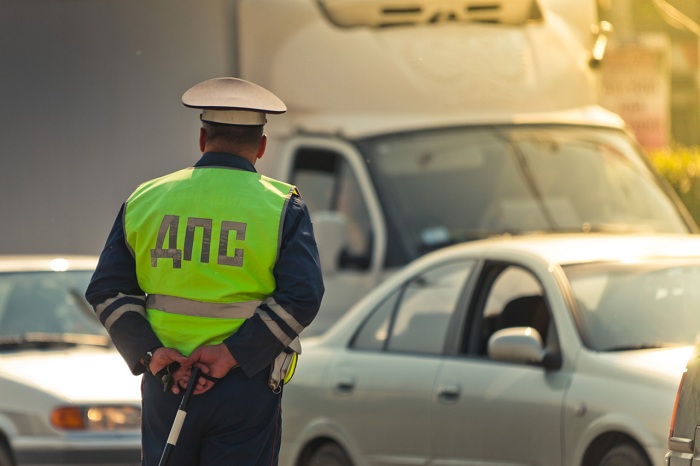
In accordance with current legislation, the car must be stopped for a minimum period of time. At the same time, one should take into account the fact that the driver’s statement that the stop time exceeds the maximum allowable and the inspector should present existing claims or allow the trip to continue, the traffic police officer can openly declare that his authority includes the right to arrest up to 3 hours.
If you hear such a statement, you do not need to immediately fall into hysterics, since the usual verification of papers or the execution of a protocol does not become the basis for detention. Such a long delay is likely only when it is necessary for the implementation of the executive document or the study of the case.
Many Russians are interested in the question: What are the rights and obligations of traffic police officers when filling out the protocol? When answering it, it must be remembered that at the moment the driver reads the protocol, the law enforcement officer is obliged to tell him about the rights. If this requirement is not met, the car owner has the right to write a complaint to the higher management. Among other things, this violation indicates that the driver was held liable with significant violations, which means that the proceedings should be terminated.
It is useful to know that the protocol forms used in different regions, may differ significantly from each other. Regardless of the reasons that prompted the inspector to issue this document, before putting his signature under it, the driver must carefully study the text and make the necessary adjustments (if any). If the car owner has not received an explanation regarding his rights, then this fact should also be noted in the protocol.
A copy of the document is handed over to the car owner in person. The signature in the original should be put only after receiving your copy.
Participation of witnesses and witnesses
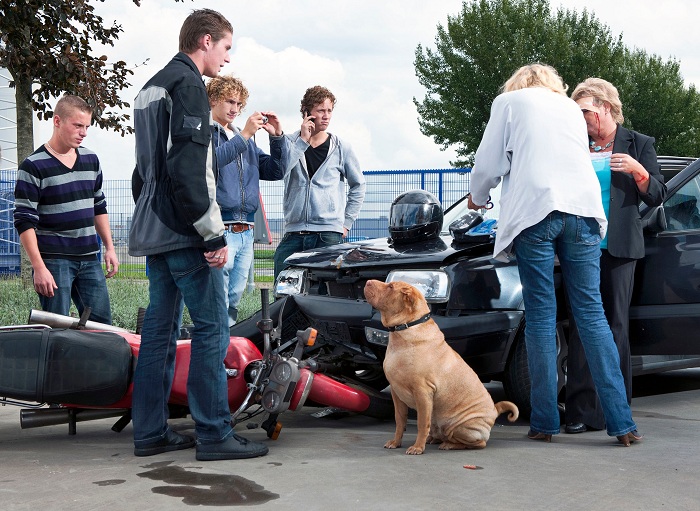
If the traffic inspector draws up a protocol, then he is obliged to involve witnesses in this procedure, who will not only provide information on the case, but also confirm its authenticity by signing the document. As for the implementation of executive measures, it requires the mandatory participation of attesting witnesses.
In accordance with the current legislation, in order to prevent a violation, find out the identity of the perpetrator, fill out a protocol when this procedure cannot be performed on the spot, guarantee a prompt and correct study of the case, identify the fact of a violation or implement enforcement measures, the traffic police officer has the right to apply a number of appropriate measures.
These include:
- Transportation of the suspect or perpetrator to the department;
- Detention;
- Carrying out the inspection procedure (personal belongings, cargo, car, premises);
- Deprivation of the right to drive this category of transport;
- Seizure or arrest of cargo, personal belongings or documents;
- Drive unit;
- Sending the car to the impound;
- Referral of the driver for a medical examination.
If we talk about cases where the rights and obligations of traffic police officers provide for the mandatory involvement of witnesses, then they include the following circumstances:
- The screening procedure carried out in relation to a suspect or guilty person;
- Inspection of documentation and things located on the territory, the owner or owner of which is a legal entity;
- Conducting vehicle inspections;
- Confiscation of papers or personal items;
- Forced transportation of a car that obstructs the passage or parked in a prohibited place, if the owner of the vehicle is absent;
- Seizure of the car, goods and other things.
If there are good reasons to believe that the driver is under the influence of drugs or alcohol, and he is sent to undergo a medical examination, then a prerequisite for the implementation of the measure is the involvement of two witnesses. If this condition is observed only partially or is not fulfilled at all, then the application of the measure and the execution of the protocol are subject to appeal due to inconsistency with the law.
The generalization of the above makes it possible to establish that the work of the traffic inspector, starting from the moment of stopping and ending with the opening of office work, must fully comply with the requirements normative documentation. Otherwise, the actions of the law enforcement officer will be considered illegal and can be appealed by submitting an application to the higher management or to the courts.
Citizens should also understand that if the inspector does not fulfill his duties, thereby violating the law, then there is no need to panic. If you do not know how to properly defend your interests, you can always contact our lawyers, who have extensive theoretical knowledge and many years of practical experience, and get detailed advice on this issue.
Responsibilities of a traffic inspector
Most motorists do not know exactly what duties of a traffic police inspector exist, in what cases he can stop the car and what exactly he should do in the event of an accident. Let's look at these issues in general terms.
Accident with serious consequences
In the case when an accident caused serious consequences, an investigator, a forensic expert, as well as an employee of the UR if the driver fled, go to the scene together with the traffic police.
This creates:
- protocol;
- scheme;
- protocol for TS;
- reference;
- explanations of the participants in the incident;
- sobriety protocol.
accident without injury
In less complex cases, one officer is enough to work at the scene. The duties of the traffic police inspector then include:
- drawing up a traffic police scheme;
- a protocol on an administrative offense and an annex with a list of damage to the vehicle;
- if necessary, material evidence is attached;
- being tested for intoxication.
The main task of the employee is to correctly interpret the event and fix it in in full facts.
Accident scheme
The duties of the traffic police inspector upon arrival at the scene involve drawing up a diagram. A clear drawing should reflect the road section, landmarks, signs and markings, the position of the vehicle and the nearest stationary objects. Participants in the accident can and should control the measurements, and at the end they check the scheme and sign it. Two witnesses must also sign.
Participants may request that something be added to the scheme or that it be corrected. The document should be signed only after the contradictions are resolved.
Explanations
After drawing up the diagram carriageway released and proceed to the stage of writing explanations. In this part, it is better for the participant to show their knowledge. Otherwise, the traffic inspector will rightly think about the degree of guilt of a person who does not know the traffic rules.
While explanations are being written, the duties of the traffic police inspector include issuing damage certificates. When checking them, pay attention to all, even the smallest, damage, as well as hidden defects, otherwise it will not be included in the insurance compensation, if you count on it.
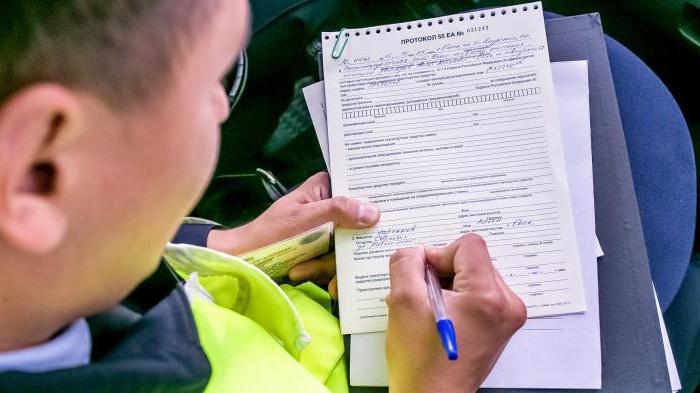
Protocol
This document is drawn up at the end, when the previous ones are ready. The duties of the traffic police inspector when registering an accident at this stage are to make a decision based on the data and in strict accordance with the traffic rules about who is the guilty party. The protocol is written out in the name of the guilty person and a copy is handed to him. It is not awarded to another participant. The document shows which traffic rules was violated, and this conclusion is substantiated.
If a participant in an accident is blamed for the accident, but he does not agree with this, he can:
- do not sign the protocol (then witnesses will prove that the accused refused to sign it);
- sign, but on the back or on a separate sheet, state your version of what happened, justifying why he thinks so.
In the latter case, before signing the document, you need to cross out the "offender's signature" and write "driver's signature" instead.
In addition, if, in the opinion of the participant in the accident, the duties of the traffic police inspector in drawing up the protocol or other actions were not duly observed, his decision is appealed to a higher superior. And then, if the need remains, in court. However, it should be borne in mind that the participant in the accident will have to prove the illegality of the actions of the traffic police officer. In fact, he must stock up on convincing arguments that will testify to the erroneousness of the decision made by the inspector.
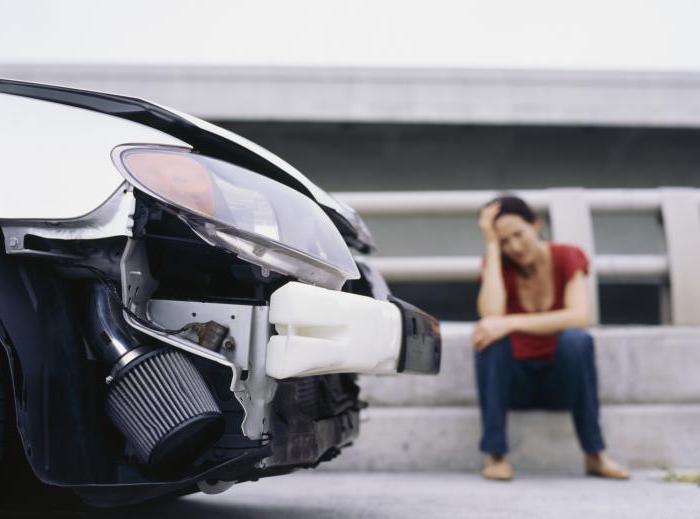
Resolution or referral of the case to the traffic police
Based on the protocol, the inspector issues a decision on an administrative offense. It indicates the person responsible for a specific article of the Code of Administrative Offenses. If the article provides for the payment of a fine, then the culprit is given a receipt, which he fills out on his own. If the punishment involves the deprivation of rights or confiscation of the instrument of the offense, then the decision on this will be made only in court.
But sometimes, when the circumstances are unclear to the employee and he cannot identify the culprit, the inspector sends the materials to the traffic police unit, to whose territory the scene of the incident belongs. Participants are informed of the time and address where they must appear to familiarize themselves with the decision, which is made within 15 days.
If there are casualties
If the accident led to serious consequences, then the driver may or may not be guilty of the deed. In other words, the corpus delicti may or may not take place. Therefore, the protocol is not drawn up, and the materials are first sent to the traffic police, from where the case should be sent to the investigating authorities within ten days. There, a criminal case is initiated or a decision is made to refuse it.
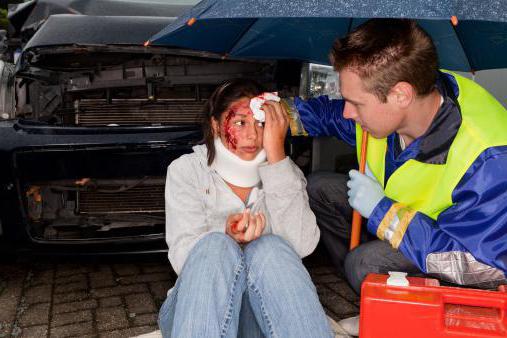
You should know that even if a case has been initiated, the guilty party can come to an agreement with the victims, and they have the right to petition for its termination. This, as a rule, becomes possible when the culprit voluntarily compensates for the damage caused.
If a protocol on an administrative offense was drawn up at the scene of the incident, then there will no longer be criminal liability. The violator cannot bear both criminal and administrative liability for the same violation. It all depends on the consequences that have come. Therefore, you can be calm if a protocol on an administrative offense is drawn up at the scene of the incident. This means that nothing will get worse.
In the presence of victims, the severity of bodily injuries is established by a forensic medical examination, as a result of which an act is drawn up and filed with the case file.
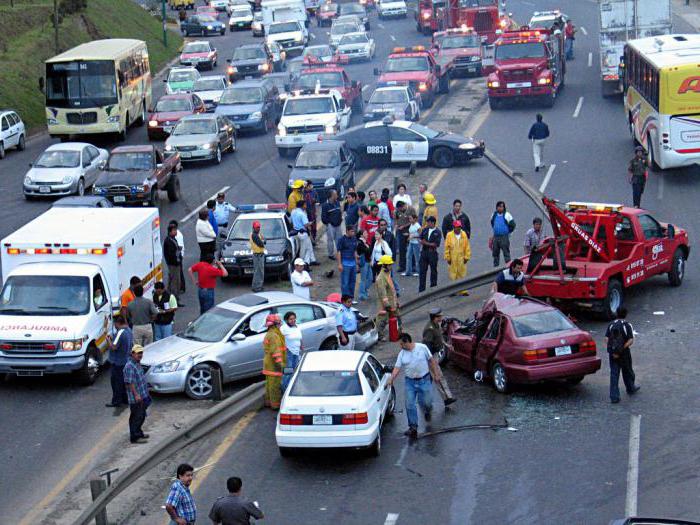
Communication with the traffic police officer
Let us now consider other situations. What are the duties of a traffic police inspector when stopping a driver?
First of all, when talking with traffic participants on the road, he must remain polite, tactful and objective, state the requirements clearly, without double meaning. When contacted, the employee must introduce himself by stating his last name and rank, and then say why the driver was stopped.
If a citizen addresses the inspector, then they should listen carefully and either take the necessary measures or tell where to turn to solve the problem.
If a citizen's freedom is restricted, he must be told the reason for this and explain his rights and obligations.
IN functional responsibilities the traffic police inspector includes the collection of evidence in the proper manner, otherwise the prosecution will be declared illegal. The citizen must be clearly and clearly explained what exactly he violated and under what article responsibility comes.
If there are conflict situations, then the traffic police officer must explain the procedure for appealing his actions and say the location and telephone number of the official.
The traffic police inspector has the right ...
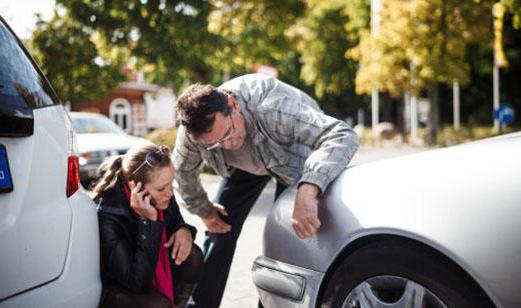
Stopping a car by a traffic police inspector is possible in the following cases:
- if the safety requirements of DD are violated by visual signs or when fixing in technical means;
- there is evidence that the driver or passengers of this vehicle are involved in an accident, an administrative offense or a crime;
- there is evidence of the use of the car for illegal purposes;
- it is necessary to interview the driver or passengers if they are eyewitnesses of an accident, offense or crime;
- it is necessary to attract a witness;
- adjustments need to be made.
- need to use a vehicle.
- to involve the driver for assistance;
- to carry out special measures regarding vehicles on the basis of relevant acts;
- check documents.
The duties of a traffic police inspector in Russia when stopping a car include giving a signal with a hand gesture or using a baton, using a loudspeaker device or a disk with a red signal. An additional whistle signal is also allowed. The inspector must indicate the stopping place.
Stopping vehicles is prohibited
But there are cases when the traffic police officer does not have the right to stop the transport. This applies to sections of roads where stopping is prohibited. However, exceptions may be cases where crimes are stopped and the threat of harm is prevented. Therefore, one can rightly doubt the legality of such actions. After all, it is known that even a person who has committed a violation can be held liable only in a legal manner.
When the car was stopped, the traffic police officer must immediately approach the driver, introduce himself and say the reason why he stopped the vehicle, demand documents, and if a person is involved as a witness, explain his rights and obligations.
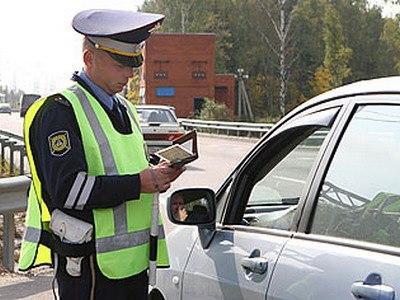
If there was no need to stop the car, then the functional duties of the traffic police inspector in Russia are considered violated, in connection with which he himself is brought to administrative responsibility. The punishment under the relevant article provides for a fine of up to twenty thousand rubles.
Conclusion
These are our rights and duties of a traffic police inspector. When the driver stops at drunk, to eliminate the breakdown, provide first aid to people, if necessary, verify the number, inspect the cargo and suspect illegal actions, he may also require the driver and passengers to get out of the car.
But, one way or another, a driver who knows his rights is able to defend them, and a traffic police officer, in turn, seeing this, especially in an accident, will be more inclined to believe him.
There is a lot of controversy about the cases in which the traffic police inspector has the right to stop the car and how he should behave. To dispel doubts, here is a list of the rights and obligations of the traffic police inspector in relation to road users in accordance with the Administrative Regulations for the control and supervision of compliance by road users with requirements in the field of road safety, approved by order of the Ministry of Internal Affairs of the Russian Federation of March 2, 2009 No. 185.
The administrative regulation is the main document regulating the actions of the inspector of the road patrol service in the performance of his official duties.
Inspector's rights
The traffic police inspector has the right to stop any vehicle for violations, as well as in the event of special events, and require documents for verification (driver's license, insurance, technical certificate and etc.). If you do not have the necessary documents with you, the inspector has the right to detain your vehicle until all circumstances are clarified. However, at your request he can give you time to decide on the delivery to the place of all required documents
(for example, you can call home and ask a relative to bring you documents). At the same time, you do not have the right to leave the place where you were stopped by the traffic police inspector.
If the inspector suspects that the driver is driving while intoxicated, then he not only has the right, but is also obliged to stop him. Visually, the drunken state of the driver can be determined by his behavior on the road. The most characteristic symptom: the car drives unevenly, wagging from side to side, ignoring the requirements
road signs and road markings. However, an overly cautious driver who tries to drive unnoticed, emphatically politely let everyone pass, move at a speed much lower than allowed, etc., can also fall under suspicion.
According to the latest amendments to Code of Administrative Offenses refusal of a medical examination for the state of intoxication by a person deprived of the right to drive or who does not have the right to drive is punishable by an administrative arrest for up to 15 days, and those to whom this is not applicable (pregnant women, disabled people, etc.) are punished with a fine of 5000 rubles.
In addition, the traffic police officer has the right to stop any vehicle if assistance is required to the participants of the accident traffic accident
(for example, you need to push or tow broken car from the roadway, or urgently take the victim to the hospital, or you need some kind of tool, first aid kit, etc.). In such situations, the driver is obliged to provide assistance not only from a legal, but also from a moral point of view: trouble can happen to anyone.
If the car is wanted or the inspector has enough reason to believe that it is used for illegal purposes, then he has the right to stop such a car and even detain it until all the circumstances are clarified.
Situations may arise when your car is necessary for representatives of law enforcement agencies (police, FSB, etc.) to perform their duty (for example, you need to deliver someone to specified place or catch up with the offender). In such cases, any traffic police inspector has the right to stop any vehicle and ask the driver for assistance, this is regulated by clause 2.3.3 of the SDA.
Having stopped the vehicle, the traffic police officer may require the driver to leave the vehicle in the following cases:
- the inspector has a suspicion that the driver is in a state of intoxication (both alcoholic and narcotic);
- to eliminate a technical malfunction of a vehicle or trailer;
- if the rules for the carriage of goods are violated (meaning any goods, not only especially dangerous ones);
- to verify the numbers of units and components of the car (engine, transmission, body) with registration documents;
- for inspection of a car, trailer or transported cargo;
- if the driver of the vehicle or his passengers are suspected of committing any crime;
- if the participation of drivers in the preparation of the necessary documents is required (for example, as witnesses or witnesses, etc.);
- when the assistance of the driver and passengers of the vehicle is necessary for other road users (for example, as a result of an accident or a breakdown of another car, etc.).
In other cases, the traffic police officer not entitled to claim from the driver to leave the vehicle.
Duties of the Inspector
Any inspector who stops a vehicle must introduce himself to the driver and tell him the reason for the stop. At the same time, the inspector has the right not to report the true reason if the driver of the car or any of his passengers is suspected of committing a crime or of being involved in a traffic accident.
Having stopped the car, the inspector, at the request of the driver, is obliged to present his service certificate.
However, it is strictly forbidden to transfer it to the driver, so the traffic police officer must hold it in his hands, and the driver at this time can study or rewrite the identity data. At the request of the driver, the inspector is also obliged to inform him of the number of his badge.
If the reason for the stop is a violation by the driver of the Rules of the Road, then the duties of the inspector include a clear and unambiguous explanation of the essence of the violation with a mandatory reference to the relevant paragraphs of the Rules.
traffic police inspector legally has full right carry out a vehicle inspection. In this case, the search is carried out in the presence of two witnesses with the obligatory drawing up of a protocol. The protocol can subsequently be used when filing a complaint against the actions of traffic police officers if the driver believes that they
the actions were unlawful (in particular, the traffic police will have to give explanations on what basis the vehicle was searched), as well as to resolve other disputes.
By the way, traffic police inspectors often refuse to conduct an inspection if the driver insists on drawing up a protocol.
Do not forget that the traffic police inspector is a police officer, and therefore has the full right to require the drivers and passengers of the vehicle to present identification documents, or to carry out an administrative detention. In addition, the inspector, as a police officer, may take other actions provided for by the current legislation (first of all, the law "On the Police").





